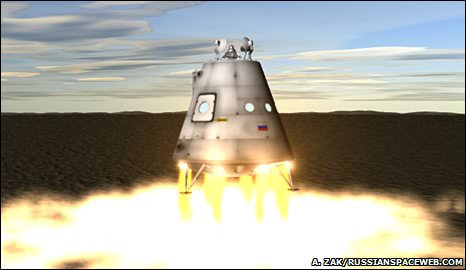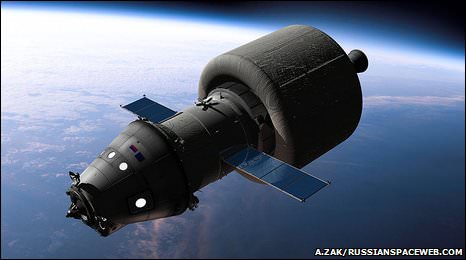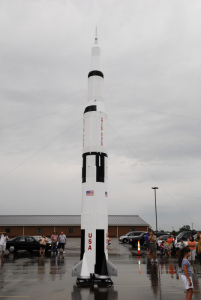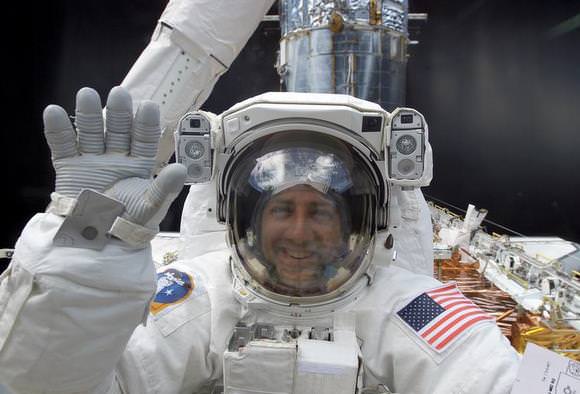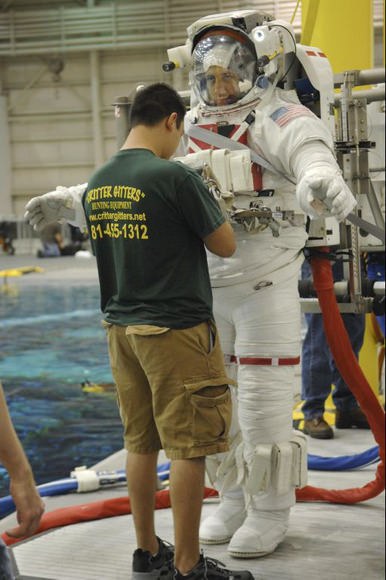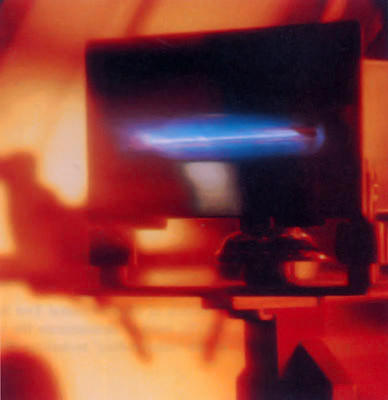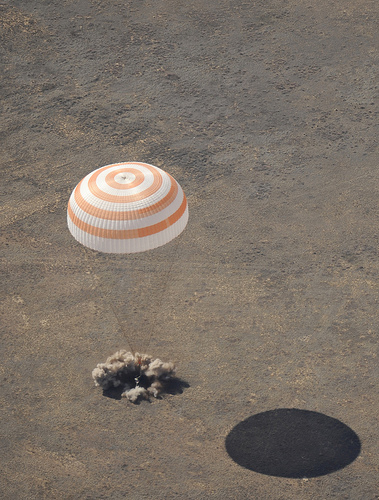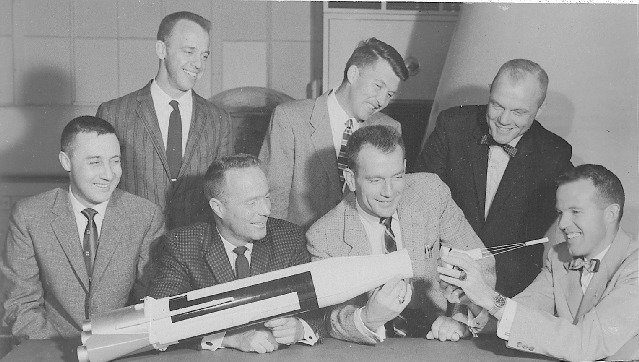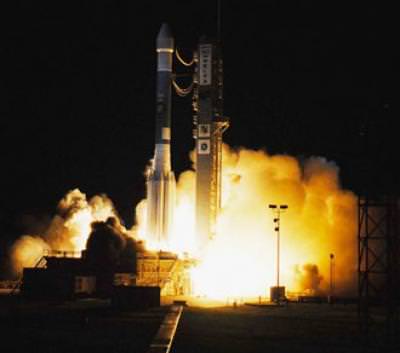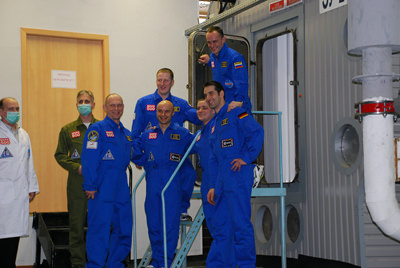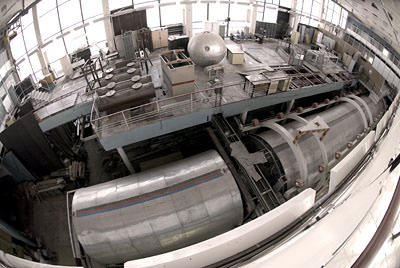[/caption]
The crew of the upcoming Hubble servicing mission have not only been busy training for all contingencies of spaceflight on the shuttle and telescope repair (have you been following Astro_Mike on Twitter?) but they’ve also been training for the big screen. The REALLY big screen. NASA announced today that the crew will be using IMAX 3-D cameras to document this most complex of space shuttle operations — the final servicing mission to the Hubble Space Telescope. And in another bit of news, in a show of solidarity and support of the shuttle astronauts, astronomers from the University of Alabama are encouraging everyone to “raise a wing” to the Hubble repair crew.
The IMAX 3-D cameras will launch aboard space shuttle Atlantis, which is scheduled to lift off May 11. Astronauts will use the cameras to film five spacewalks needed to repair and upgrade Hubble. The IMAX footage will be combined with images from Hubble itself to create a new IMAX producton, “Hubble 3D,” set for release in spring 2010.
“We have worked with IMAX on past Hubble missions and are excited about working with them again on the current Hubble mission. The Hubble Space Telescope continues to dazzle us with the splendor of our universe, and after the mission we look forward to many more years of awe-inspiring imagery,” said Bob Jacobs, NASA’s acting assistant administrator for public affairs at NASA Headquarters in Washington. “IMAX has developed innovative 3-D image capture and projection technology that creates a large-scale, immersive educational experience in which those of us on the ground are no longer passive observers of spaceflight, we’re active participants.”
The IMAX team has trained Atlantis’ crew at NASA’s Johnson Space Center in Houston to operate the cameras. One will be mounted outside the crew cabin in the shuttle’s cargo bay to capture IMAX 3-D images of the historic final servicing mission. The commander and pilot will double as filmmakers as two teams of spacewalking astronauts — working in tandem with the shuttle’s robotic arm — perform some of the most challenging work ever undertaken in space as they replace and refurbish many of the telescope’s precision instruments.
And now for more on “raising a wing” to the crew, which came to us via Pamela Gay: Dr. William Keel of the University of Alabama Department of Physics and Astronomy is planning to head to the local Buffalo Wild Wings to watch NASA TV during the Hubble repair mission’s EVAs. This is perhaps astronomy’s “championship” event, and instead of the Final Four, it’s the final Hubble servicing mission. Keel will be watching with colleagues and students to take in the EVAs and perhaps even raise a Wild Wing in salute of the astronauts achievements.
On her Starstryder blog, Gay says, “While this idea started in Tuscaloosa, there is no reason for it to end there. Many restaurants and bars have cable television packages that include NASA TV. Next week, grab a friend and grab a beverage and ask the guy behind the bar to tune the TV into the greatest high risk game of all: It’s Man versus the Machine as Mike Massimino and the STS-125 team of astronauts upgrade the Hubble Space Telescope.”
If you’re interested in joining in, check out the NASA TV schedule.


